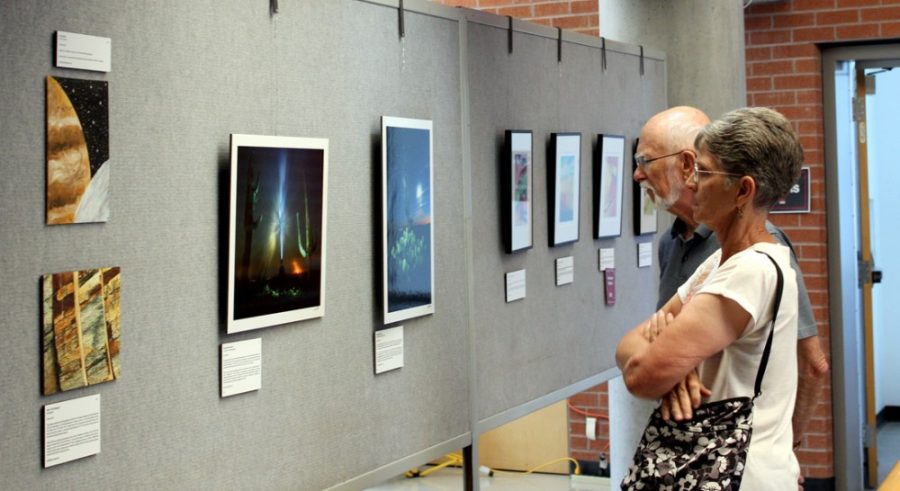For many people, data and art seem essentially disparate. However, they have more in common than one might think, as exemplified by the Art of Planetary Science exhibit.
Jamie Molaro, a fifth-year graduate student in planetary sciences, organized the event. She said she saw the event as a way to encourage scientists to create art out of their data. She added that scientists see their data in a unique way and, through the exhibit, can present this data in a beautiful way and reach out to the community.
The images range from science to science fiction in a variety of media. Many of the pieces of art were not “art” in the traditional sense, but instead were images taken by the powerful HiRISE camera of the surface of Mars. These images are important scientifically as they help researchers learn more about the geology of the planet and even decide where to land rovers, but they also have aesthetic value.
“When you look at these images, it’s stunning,” said Ari Espinoza, the media contact for HiRISE. “It’s incredible because you are looking at the surface of another world with its canyons, dust avalanches, dust devils, bedrock, the list goes on. So, it’s two for one, really: gorgeous vistas of an alien world and things we can find analogues to here on Earth.”
Other scientists used data to create their images. Dolores Hill, a senior research specialist in lunar and planetary sciences, submitted several images from her data on meteorites. She studies chondrites, which are the oldest rocks in the solar system.
One of her submissions shows chondrites in an X-ray image of a slice of a meteorite. Another shows slices of the moon tree at the UA, which was planted from seeds that had been to the moon and back. A third image gives the composition of a slice from a meteorite shower in Russia in 2013. Each image is art, story and data.
These images, along with many others, provide a connection to the science for the general public. An explanation is paired with each image, briefly describing the science behind it so that the art also serves as a type of outreach.
“Scientists are, of course, looking at these images with a different approach, but I think there’s a great deal of overlap because these pictures can inspire someone to learn more,” Espinoza said.
The planetary science department does outreach, but much of it is aimed at children. The exhibit provides a way to reach out to a larger community of adults as well, Molaro said.
The artists also often learn more about planetary science, especially those in the International Association of Astronomical Artists, which emphasizes the connections between their art and science, Molaro said.
“The artists love meeting the scientists and the scientists are interested in how the public views their work,” Molaro said.
The images may also inspire people to pursue astronomy or planetary science.
“Lots of scientists often recall memories of seeing an astronomy book or looking through a telescope as their first inspiration, and we think that’s true of our images,” Espinoza said.
_______________
Follow Amy Nipper on Twitter.









